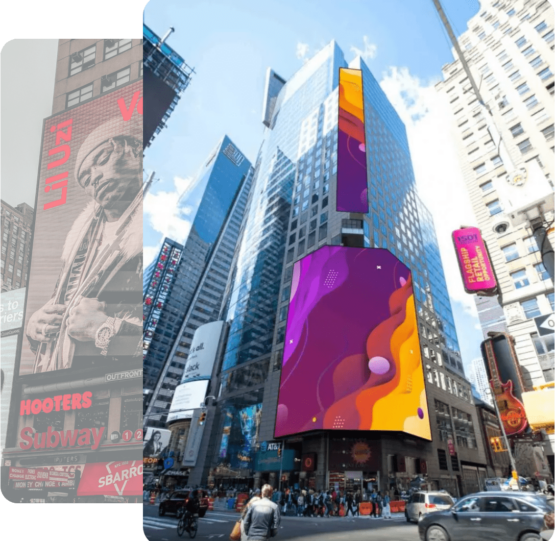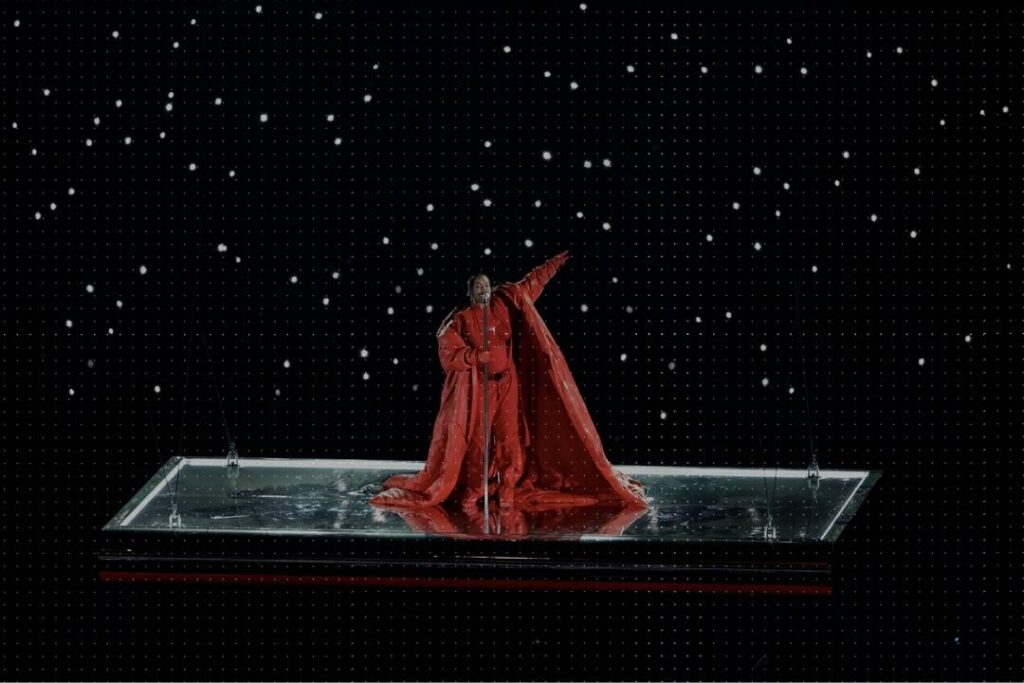Find the best spot for you
Search by state, city or location, and get the most of it!

What you need to know about advertising on billboards in New York
New York is the capital of billboards. With iconic locations such as Times Square, it’s important to make a stand. We have thousands of connected billboards just waiting for you. Check out our full article about NY here.
Why to choose Blindspot?

Transparent pricing
Always know the exact pricing based on hourly slots, impressions and number of plays.

Easy booking process
Get your ad up on the screen in just a few easy steps, no back and forth or lengthy process

48 hours to go live
Blindspot’s automated process makes it easy and painless to go live on the Nasdaq billboard
Other top-rated cities
FAQs
What is a digital billboard and how it works?
A digital billboard is an electronic billboard that uses light-emitting diode (LED) technology to display dynamic content that can be changed remotely, and are also known as programmable billboards or jumbotrons. Digital billboards mostly use a single large display panel, but can be made up of multiple panels that form one large display. They are often located in high-traffic areas such as along highways, in shopping malls, or in sports stadiums. Many businesses use digital billboards for advertising because they offer the ability to change the ad content quickly and easily, which allows for more targeted advertising. For example, a business could advertise different products or services depending on the time of day or target a specific audience with a certain message. Digital billboards typically use LEDs to display content, which offers several advantages over traditional billboards that use static images. First, LEDs consume less energy than traditional light bulbs, which reduces operating costs. Second, LEDs can be turned on and off quickly, which allows for more precise control of the billboard’s content. Finally, LEDs can produce a wider range of colors than traditional light bulbs, which allows for more eye-catching and attention-grabbing displays. Digital billboards typically display ads for a short period of time, usually around 10 seconds, before rotating to a different ad. This allows businesses to reach a large number of people in a short amount of time.
How do digital billboards fit?
In the old order, billboards and digital billboards were a thing for big brands only. Huge media & creative budgets meant that big brands & the agencies behind them would show off their creative muscles in front of the crowds, trying to catch the eyes of those who passed by.
Oftentimes, digital billboards fit into marketing strategies as part of the branding efforts. They’re not really the channel that you would do performance marketing on since you don’t have a “shop” button readily available to click onto. As such, big brands would use them to create awareness and engage with the audience in hopes of getting them brand-hooked in order to make a purchase. Of course, you can also display sales-ready messages like offers “buy one, get one free” but that is something that you will most likely see on the static ones, where the visuals don’t actually change. But all this stuff is just for the big brands. How can any SME or startup hope to leverage that kind of power on a short budget?
Well, we said that was the “old-order” of things. Nowadays, technology is coming to make this media channel accessible to all. Our own tool, Blindspot, offers anyone the possibility to put their content onto digital billboards at a fraction of the cost by allowing them to do hourly buying.



